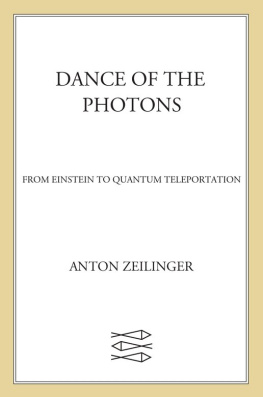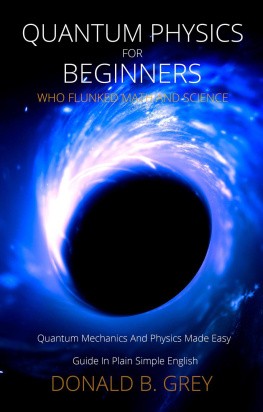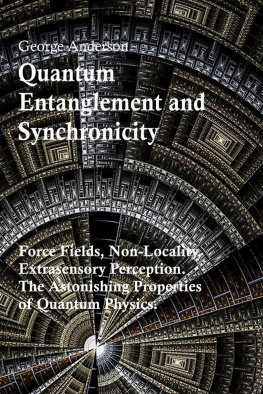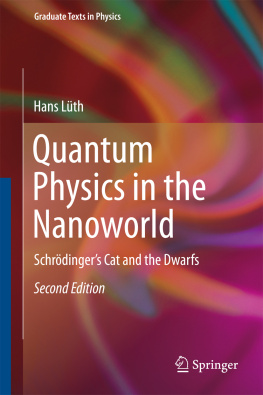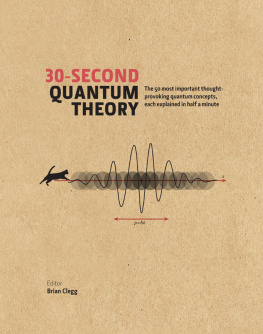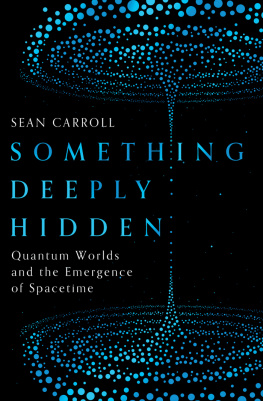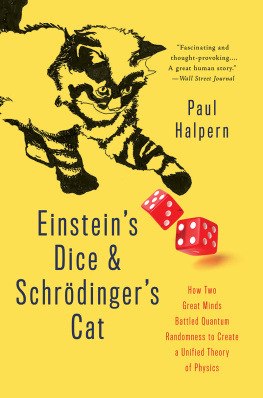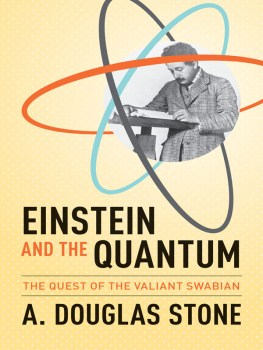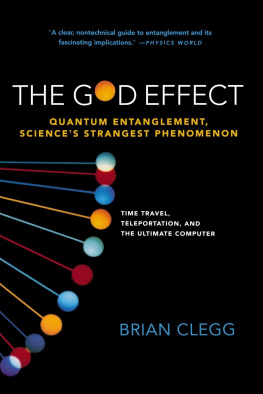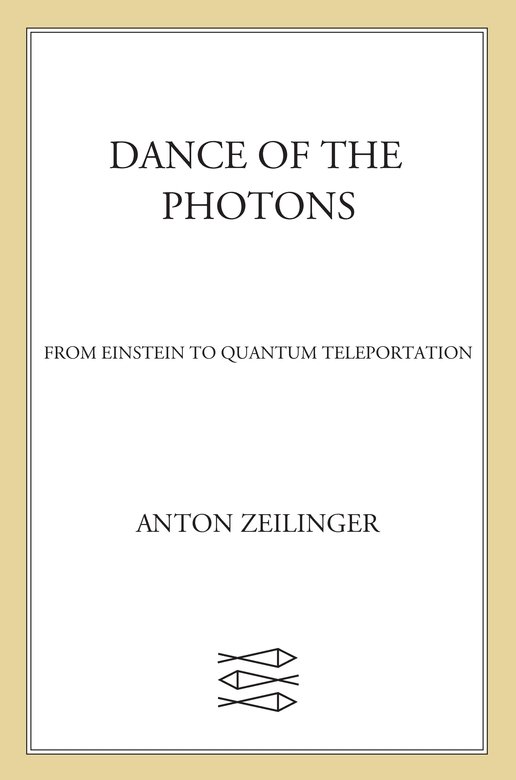A. Quantinger
INTRODUCTION
Quantum physics was created in the first quarter of the twentieth century in order to describe the behavior of atoms and other microscopic particles, including specifically photons, particles of light. Quantumphysics today is an extremely important and highly successful description of nature. Its applications include, for example, the transistor, and therefore all modern computer chips, and the laser, to name some technological examples. It addresses elementary particles as well as the physics of the early universe. Also, the quantum mechanical description of nature is mathematically beautiful and exact. All its mathematical predictions have been verified to utmost precision in experiments.
Yet, while quantum mechanics is a very successful theory, there is still a problem. This problem is of a conceptual nature. Some of the predictions of quantum physics question central cherished aspects of our view of the world. In the general public, notions like Heisenbergs uncertainty principle and quantum leaps are well known. But the most interesting phenomenon is entanglement . The name entanglement was created by the Austrian physicist Erwin Schrdinger, who called it the essential notion of quantum mechanics, the one that forces us to say farewell to all our cherished views of how the world works. We will now discuss entanglement in more detail.
In 1935 Albert Einstein, together with Boris Podolsky and Nathan Rosen, published a paper with the title Can Quantum-Mechanical Description of Physical Reality Be Considered Complete? In that paper, known as the EPR paper, the scientists show that according to quantum physics, two systems can be connected in an extremely close way, much closer than what is possible for systems in classical physics.
Let us consider two particles that had some interaction with each other. They might, for example, have collided at some earlier time. After the collision, the two particles fly away from each other. The EPR paper shows that quantum mechanics predicts that measurement on one of the two particles changes the quantum state of the other one, independently of how widely apart the two particles are separated. This influence exerted by the measurement of one particle on the other one happens instantly, without time delay. This seems to be in conflict with Einsteins own theory of relativity, according to which nothing can be faster than the speed of light. Einstein called this influence phenomenon spooky action at a distance. He hoped that it might be possible to invent a new physics where such spooky actions do not happen.
Immediately after the publication of the EPR paper, Erwin Schrdinger also considered the phenomenon, and he invented the name entanglement.
The EPR paper was essentially ignored by most physicists for a long time. People were happy that quantum mechanics gave such an exact description of nature, and they were busy applying it to all kinds of phenomena. The situation changed radically in 1964, when the Irish physicist John Bell published a paper with the title On the Einstein-Podolsky-Rosen Paradox. In that paper, Bell showed that it is not possible to understand the phenomenon of entangled systems if one starts from rather reasonable assumptions of how the world should work, assumptions that one might even be tempted to call self-evident.
Bells theorem might be one of the most profound discoveries of science since Copernicus, as the American physicist Henry Stapp once remarked. Copernicus changed the old picture of the world, according to which Earth was the center of the universe. Bell delivered a death blow to the local realistic picture of the world. Yet, there is an important difference. Copernicus showed us at the same time a new picture of the world, where the planets circle around the Sun. In the case of quantum physics, that new picture of the world is still in the making.
In the time since Bells work in 1964, many experiments have demonstrated that the predictions of quantum mechanics for entangled particles are fully correct. So these experiments confirm that the world is really as crazy (Daniel Greenberger) as predicted by quantum mechanics. While Bells considerations and the related experiments were essentially motivated by scientific curiosity, something happened that surprised everyone who was participating in the early experiments. These experiments unexpectedly laid the groundwork for ideas about a new information technology. The most important concepts in quantum information technology are the quantum computer, quantum cryptography, quantum communication, and quantum teleportation. Many believe that these are the cornerstones of the information technologies of the future.
PERFECT CORRELATIONS AND EINSTEIN, PODOLSKY, AND ROSEN
In science in general, and in physics especially, we like to describe nature quantitatively. The process often is that we make an observation and then try to understand what the reason for the observed phenomena might be. The general goal is to find a complete theoretical descriptionin the language of mathematics. The mark of a successful theory in physics is for it to be able to make predictions for future observations. These predictions can then be scrutinized in experiments. In general, a theory is considered valid as long as it has not been contradicted by experiment.
Let us consider ( One particlewe can call it particle a flies to measurement station A, the other particle, particle b , to measurement station B.
The measurement apparatuses at both stations A and B are completely identical. Each one contains some inner mechanism, which need not interest us here. It suffices us to know that with each apparatus, we can perform three different kinds of measurements on the incoming particle. Which of these measurements is performed is determined by the experimentalists, who each operate their own measurement station. The experimentalists are able to decide which of the three measurements are performed. This is done by placing the switch on the apparatus into one of three possible positions, x , y , or z . A further important feature of the measurement apparatus is that on each side, only two possible measurement results can occur. We call these measurement results + and . Furthermore, we assume that each particle emitted by the source S is indeed registered in its respective apparatus. That means that both particle a and particle b will deliver either the result + or the result , whatever the chosen position of the x , y , or z may be. The source emits one pair of particles after the other, but never two pairs at the same time.

